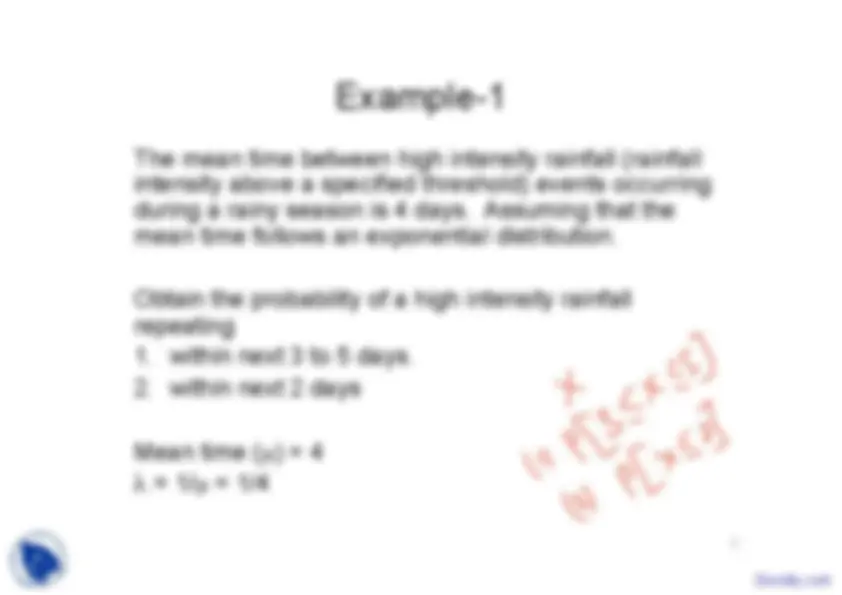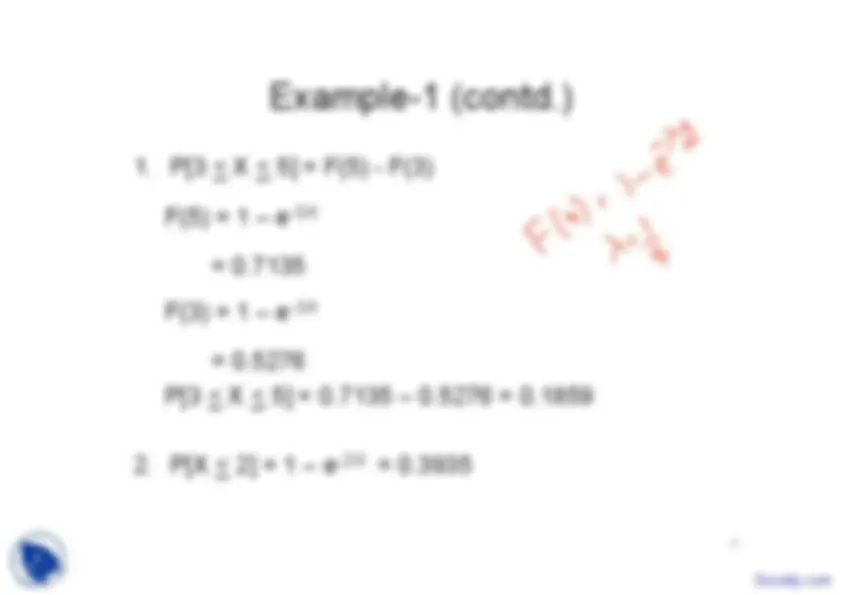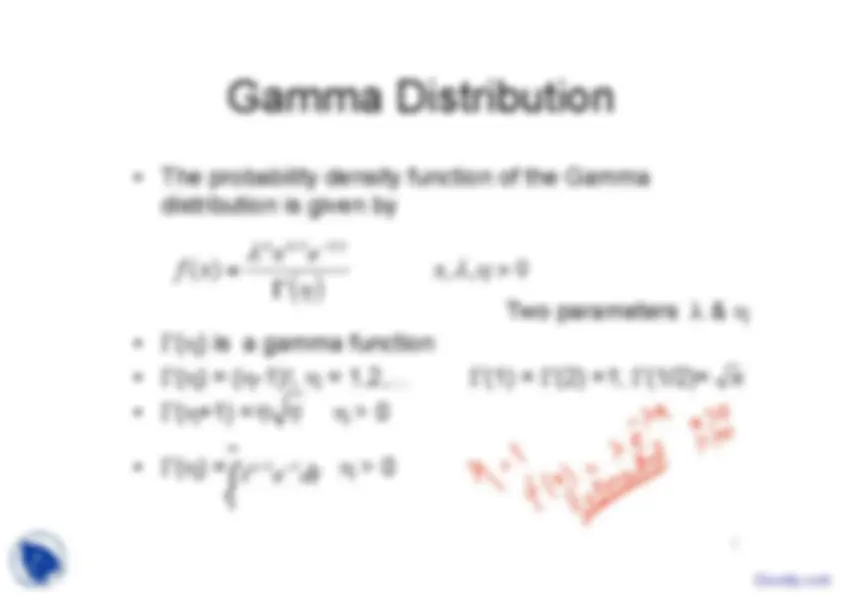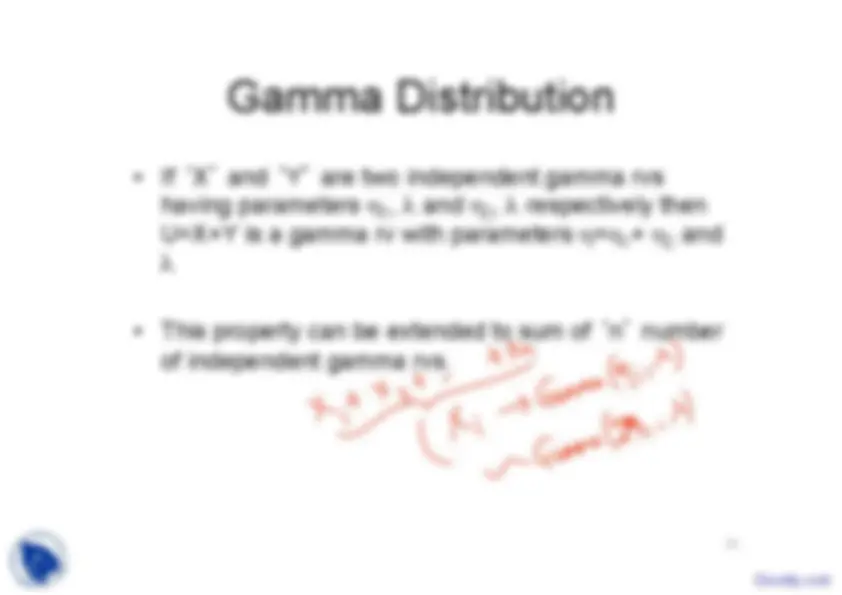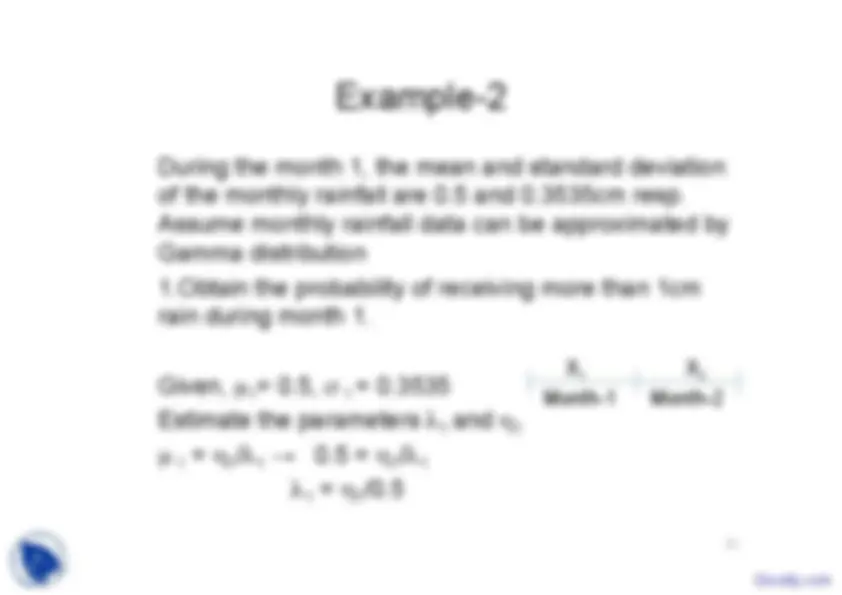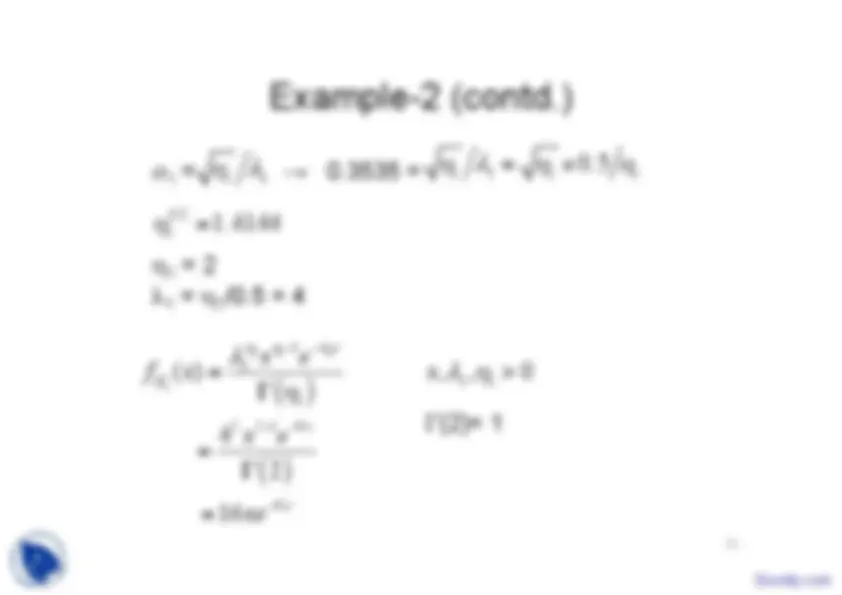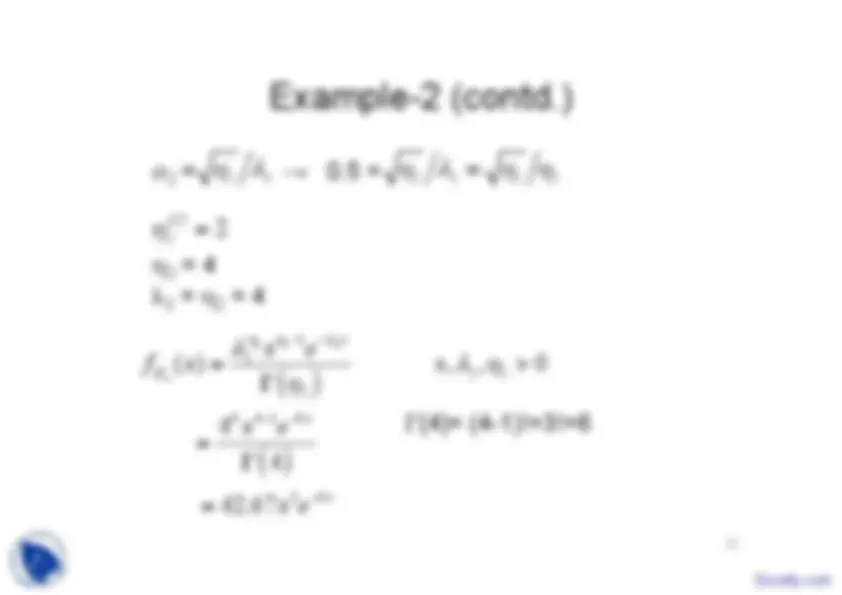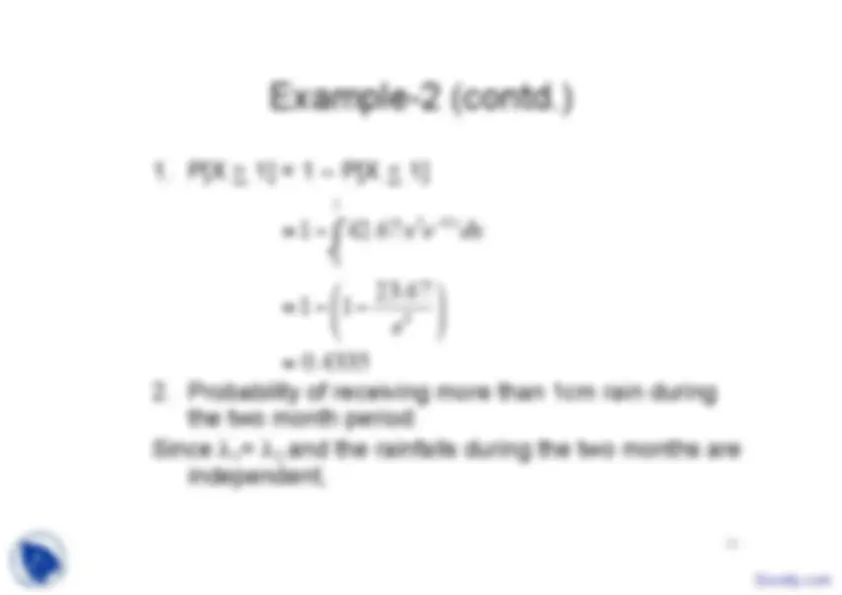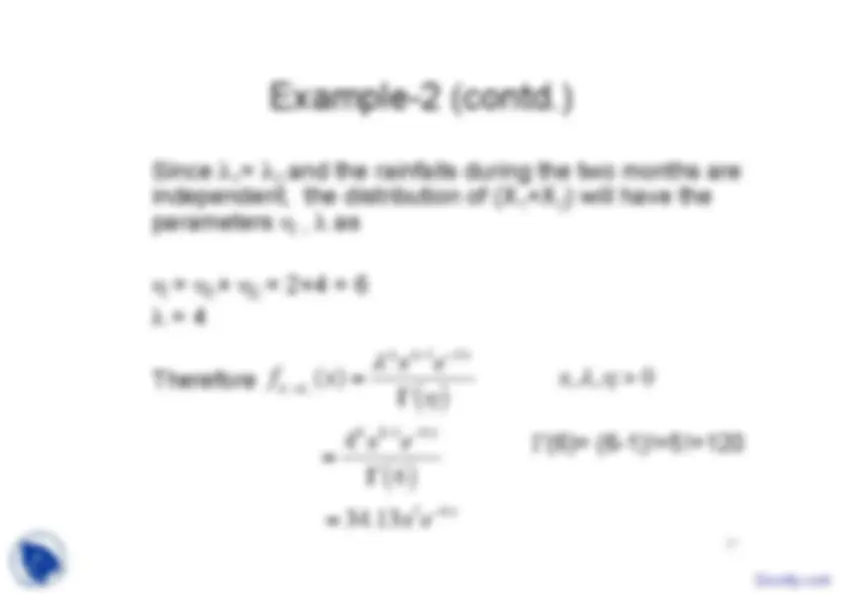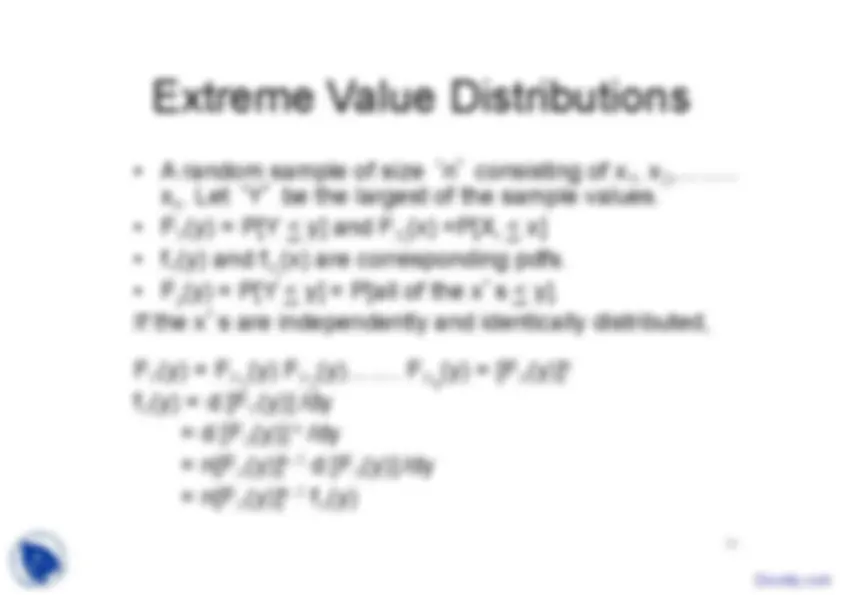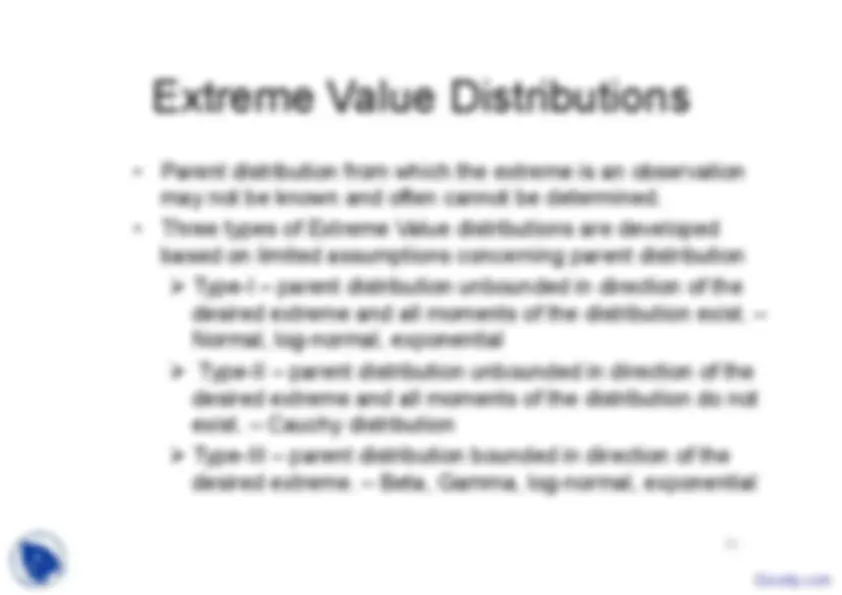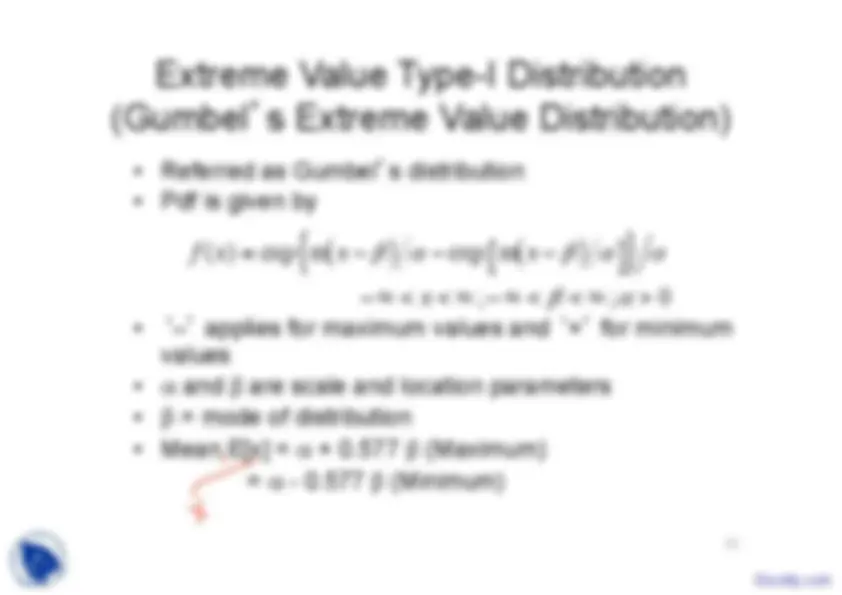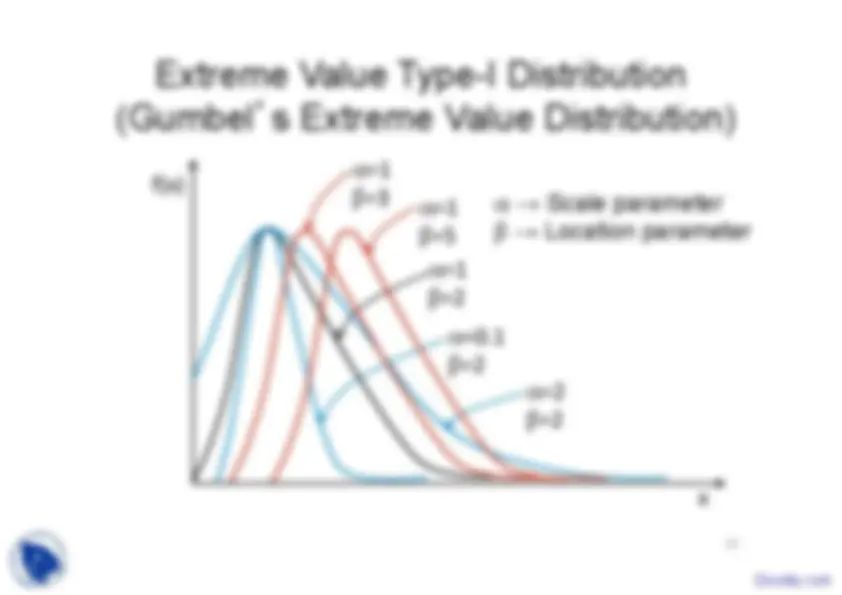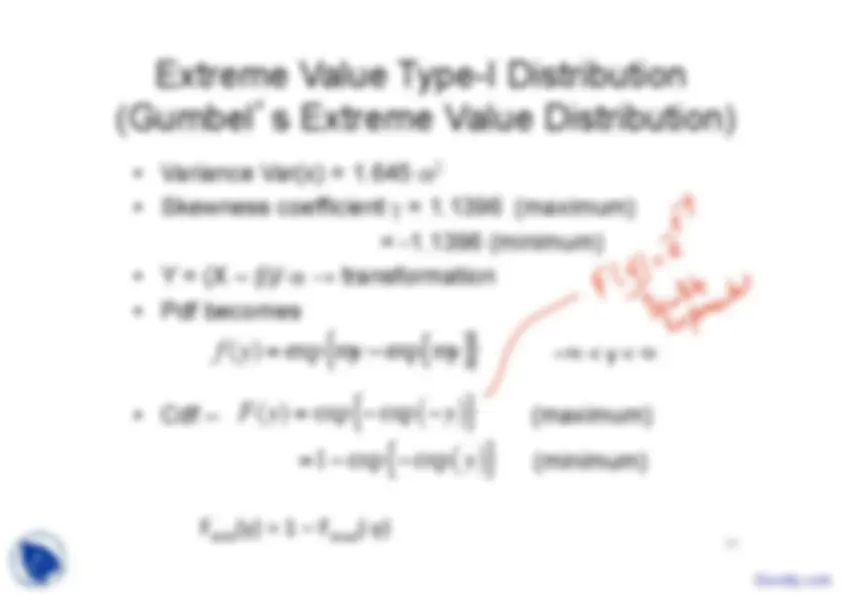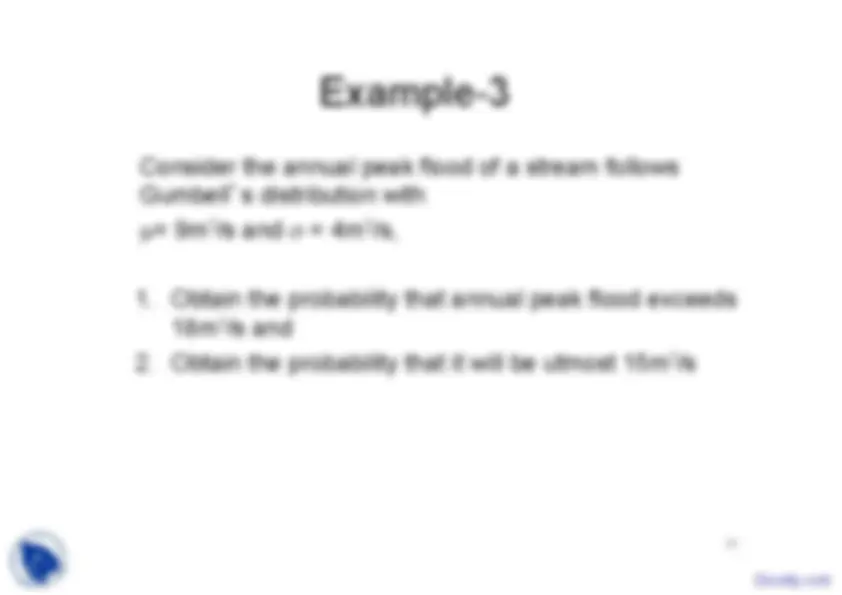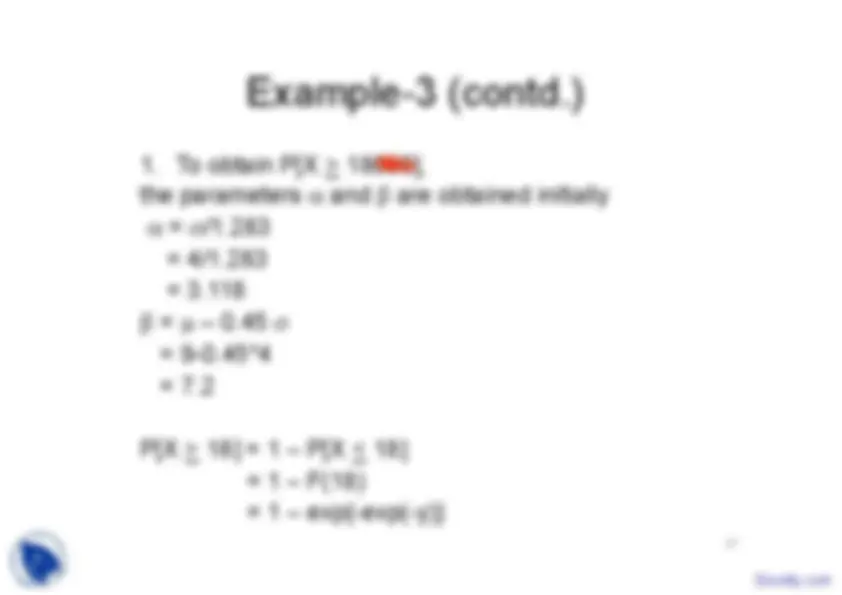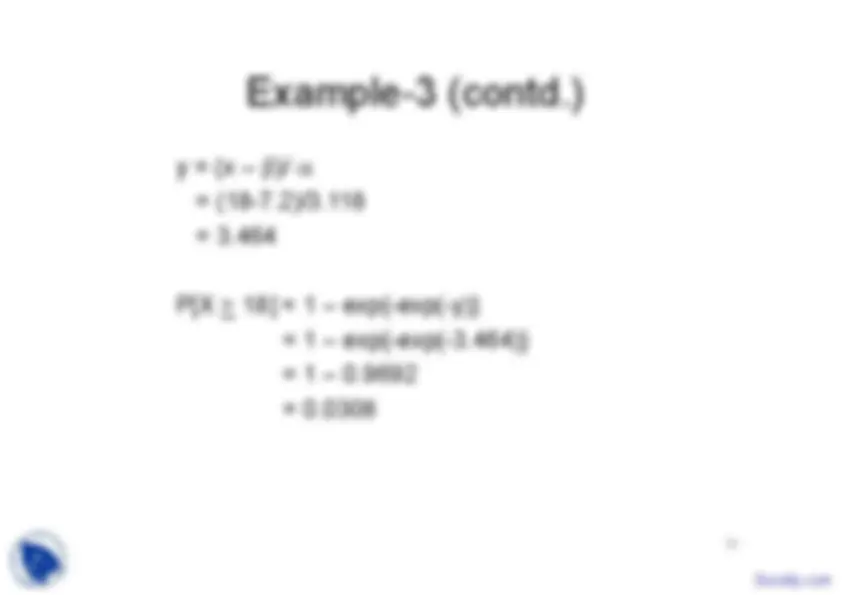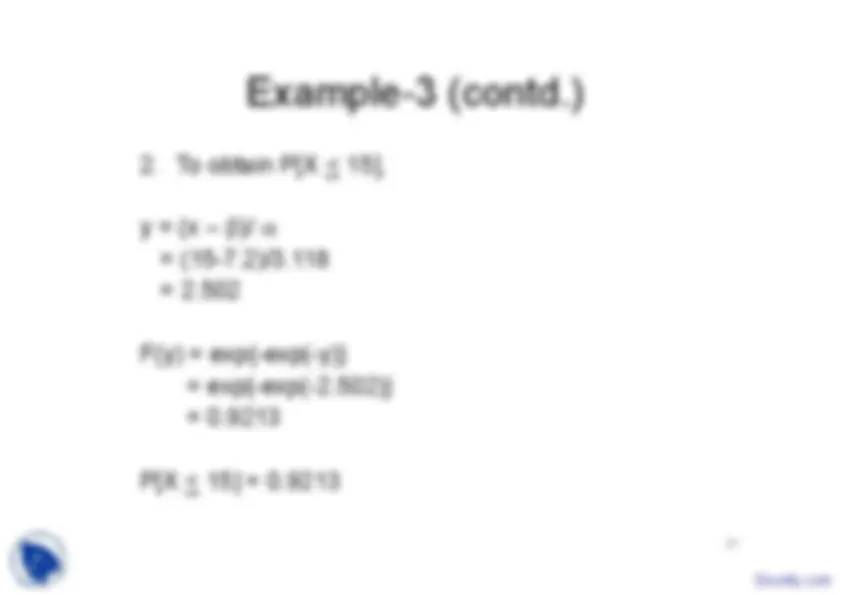Download Exponential Distribution - Stochastic Hydrology - Lecture Notes and more Study notes Mathematical Statistics in PDF only on Docsity!
Exponential Distribution
- The probability density function of the exponential distribution is given by
- E[X] = 1/λ
- λ = 1/μ
- Var(X) = 1/λ 2
x
f x e x
λ λ λ −
3 0
x x
F x f x dx e x
λ λ −
f(x) x
Exponential Distribution
- γ s > 0; positively skewed
- Used for expected time between critical events (such as floods of a given magnitude), time to failure in hydrologic/water resources systems components 4 f(x) x
1. P[3 < X < 5] = F(5) - F(3)
F(5) = 1 – e -5/ = 0. F(3) = 1 – e -3/ = 0. P[3 < X < 5] = 0.7135 – 0.5276 = 0.
- P[X < 2] = 1 – e -2/ = 0. Example-1 (contd.) 6
Gamma Distribution
- The probability density function of the Gamma distribution is given by
- Γ(η) is a gamma function
- Γ(η) = (η-1)!, η = 1,2,…
- Γ(η+1) = η > 0
- Γ(η) = η > 0
1
x
x e
f x x
η η λ λ λ η η − −
7 η η 1 0 t
t e dt
η ∞ − −
Two parameters λ & η Γ(1) = Γ(2) =1; Γ(1/2)= π
Gamma Distribution
9 η= λ= η= λ=1/ η= λ= η= λ= η=0. λ= x f(x) λ → Scale parameter η → Shape parameter Gamma distribution is in fact a family of distributions
Gamma Distribution
- If X and Y are two independent gamma rvs having parameters η 1 , λ and η 2 , λ respectively then U=X+Y is a gamma rv with parameters η=η 1 + η 2 and λ
- This property can be extended to sum of n number of independent gamma rvs. 10
σ 1
η 1
λ 1 = η 1
Example-2 (contd.) 12 1/ 1 η =1. ( ) ( ) 1 1 1 1 1 1 1 1 1 2 2 1 4 4
x X x x
x e
f x x
x e
xe
η η λ
− − − − −
1 1
η λ η 1 λ 1 =^ η 1 ×0.5 η 1
P[X > 1] = 1 – P[X < 1]
Example-2 (contd.) 13 1 4 0 4
x
xe dx
e
−
∫
σ 2
η 2
λ 2 = η 2
Example-2 (contd.) 15 1/ 2
( ) ( ) 2 2 2 2 1 2 2 2 2 4 4 1 4 3 4
x X x x
x e
f x x
x e
x e
η η λ
− − − − −
2 2 η λ 2 2 2 2
1. P[X > 1] = 1 – P[X < 1]
- Probability of receiving more than 1cm rain during the two month period: Since λ 1 = λ 2 and the rainfalls during the two months are independent, Example-2 (contd.) 16 1 3 4 0 4
x
x e dx
e
−
∫
P[X
1
+X
2
> 1] = 1 – P[X
1
+X
2
< 1]
- The values of cumulative gamma distribution can be evaluated using tables with χ 2 =2λx and ν=2η Example-2 (contd.) 18 1 5 4 0 12
x
x e dx
e
−
∫
Extreme Value Distributions
- Extreme events:
- Peak flood discharge in a stream
- Maximum rainfall intensity
- Minimum flow
- The extreme value of a set of random variables is also a random variable
- The probability of this extreme value depends on the sample size and parent distribution from which the sample is obtained 19
Extreme Value Distributions
- Parent distribution from which the extreme is an observation may not be known and often cannot be determined.
- Three types of Extreme Value distributions are developed based on limited assumptions concerning parent distribution Ø Type-I – parent distribution unbounded in direction of the desired extreme and all moments of the distribution exist. – Normal, log-normal, exponential Ø Type-II – parent distribution unbounded in direction of the desired extreme and all moments of the distribution do not exist. – Cauchy distribution Ø Type-III – parent distribution bounded in direction of the desired extreme. – Beta, Gamma, log-normal, exponential 21
Extreme Value Type-I Distribution (Gumbel s Extreme Value Distribution)
- Referred as Gumbel s distribution
- Pdf is given by
- – applies for maximum values and + for minimum values
- α and β are scale and location parameters
- β = mode of distribution
- Mean E[x] = α + 0.577 β (Maximum) = α - 0.577 β (Minimum) 22 ( ) exp (^) { ( ) exp ( ) }
f x x x
x
m m

